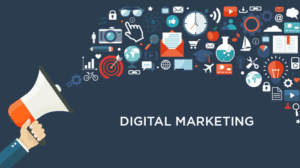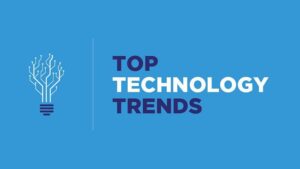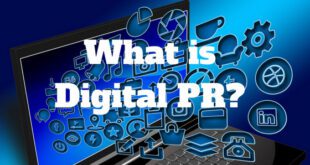Introduction
In today’s hyper-connected world, digital marketing has emerged as a cornerstone for businesses seeking to thrive in the online landscape. It encompasses a diverse set of strategies and tools to reach and engage target audiences through digital channels. This comprehensive guide will delve into the multifaceted realm of digital marketing, exploring its components, strategies, trends, and the evolving landscape.
Understanding Digital Marketing
1.1 What is Digital Marketing?
Digital marketing refers to the utilization of digital channels, such as search engines, social media, email, websites, and mobile apps, to promote products or services to potential customers. Its primary goal is to connect with the target audience in a personalized and impactful manner.
1.2 Evolution and Importance
The evolution of digital marketing has been significant, transitioning from traditional banner ads to data-driven, highly targeted campaigns. Its importance lies in its ability to reach a vast audience, measure campaign performance accurately, and adapt strategies based on real-time data.
Chapter 2: Core Components of Digital Marketing

2.1 Search Engine Optimization (SEO)
SEO involves optimizing web content to improve its visibility on search engine results pages (SERPs). Techniques include keyword research, on-page optimization, link building, and technical SEO to enhance a website’s ranking and organic traffic.
2.2 Pay-Per-Click Advertising (PPC)
PPC advertising allows businesses to display ads on search engines or other platforms and pay a fee each time their ad is clicked. Google Ads and social media advertising platforms like Facebook Ads are common examples.
2.3 Content Marketing
Content marketing is concerned with creating and dividing, applicable content to attract and occupy a distinct audience. Content types include blogs, videos, infographics, eBooks, and more, aiming to build brand awareness and drive conversions.
2.4 Social Media Marketing
Social media platforms serve as channels for businesses to interact with their audience, share content, run ads, and build a community. Effective social media marketing involves understanding each platform’s dynamics and engaging users authentically.
2.5 Email Marketing
Email marketing residue is a effective instrument for bringing up to conduct and keep alive customer connection. Personalized and targeted email campaigns can drive conversions and generate revenue when executed strategically.
2.6 Influencer Marketing
Collaborating with influencers allows brands to leverage their credibility and reach within a specific niche. Identifying the right influencers and crafting authentic partnerships can amplify brand awareness and foster trust.

Chapter 3: Strategies and Best Practices
3.1 Data-Driven Decision Making
Utilizing analytics tools and interpreting data is crucial for optimizing campaigns. Understanding user behavior, engagement metrics, and conversion rates helps refine strategies for better outcomes.
3.2 Personalization
Tailoring content and messages to individual preferences enhances user experience and fosters stronger connections. Custom-built and momentous results commitment and transformation cost.
3.3 Mobile Optimization
With the prevalence of smartphones, ensuring a seamless experience across mobile devices is imperative. Mobile-optimized websites and campaigns cater to the growing mobile user base.
3.4 Video Marketing
Video content continues to gain prominence due to its engaging nature. Incorporating videos in marketing strategies can captivate audiences and convey messages effectively.
3.5 Marketing Automation
Automation tools streamline repetitive tasks, allowing marketers to focus on strategy and creativity. Automated email workflows, social media scheduling, and chat-bots enhance efficiency.
Chapter 4: Emerging Trends in Digital Marketing

4.1 Artificial Intelligence (AI) and Machine Learning
AI-powered tools aid in analyzing data, personalizing content, and predicting consumer behavior. Machine learning algorithms optimize campaigns by learning from patterns and user interactions.
4.2 Voice Search Optimization
The ability to decipher and handle regular language in which the interaction by which a medication competitor is planned after an underlying lead compound is distinguished. Marketers need to adapt their SEO strategies to cater to this evolving trend.
Augmented Reality and Virtual Reality
AR and VR technologies put forward fascinating exposure for clients. Brands can leverage these technologies for interactive marketing campaigns, product demonstrations, and virtual shopping experiences.
Chapter 5: Measurement and Analytics
5.1 Key Performance Indicators (KPIs)
Identifying and tracking relevant KPIs is essential for evaluating the success of digital marketing efforts. Metrics such as conversion rate, click-through rate (CTR), ROI, and customer lifetime value provide valuable insights.
5.2 Analytics Tools
Utilizing tools like Google Analytics, Adobe Analytics, and social media insights platforms helps marketers gain actionable insights into user behavior, campaign performance, and audience demographics.
Conclusion
Digital marketing continues evolving rapidly, presenting businesses with challenges and opportunities. Adapting to technological advancements, embracing innovation, and understanding consumer behavior is key to staying ahead in this dynamic landscape. By implementing effective strategies and leveraging diverse digital channels, businesses can reach their target audience, foster engagement, and drive sustainable growth in the digital era.
 Data Science in Digital Marketing Data Science in Digital Marketing: Mechanism Examples, Benefits Data Science Meets Digital Marketing Magic
Data Science in Digital Marketing Data Science in Digital Marketing: Mechanism Examples, Benefits Data Science Meets Digital Marketing Magic
